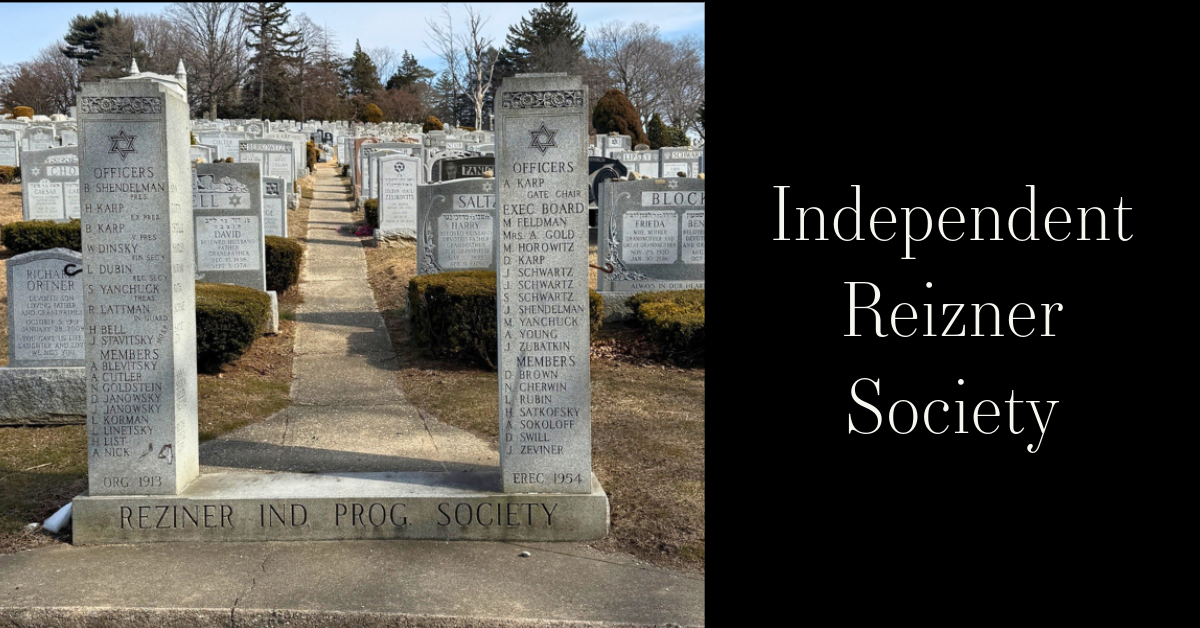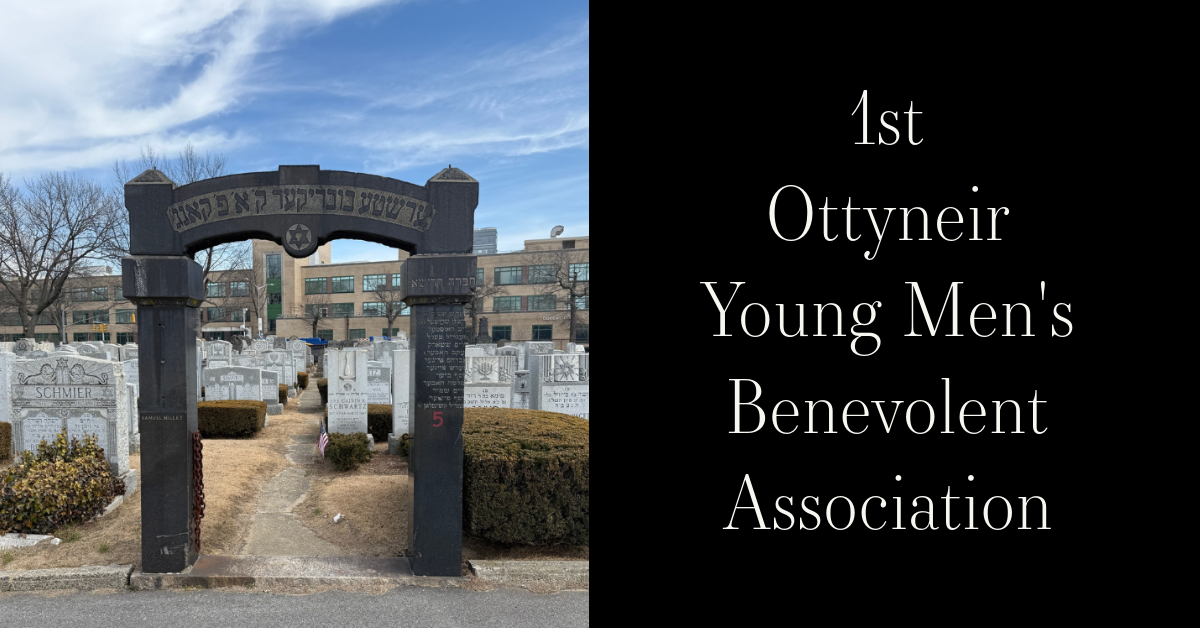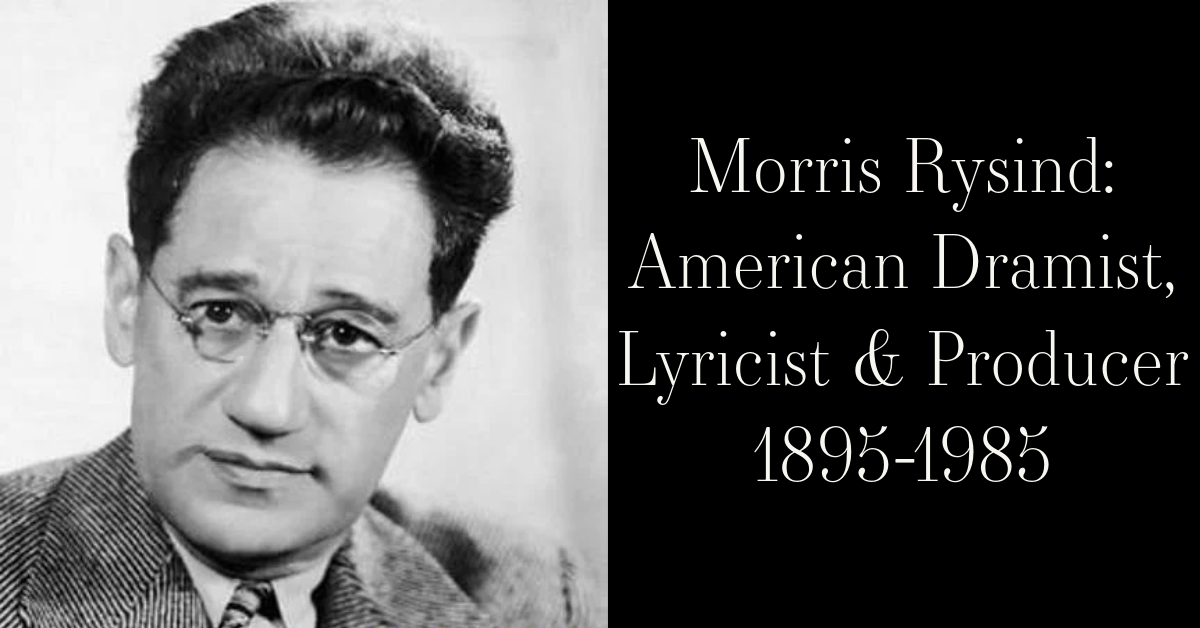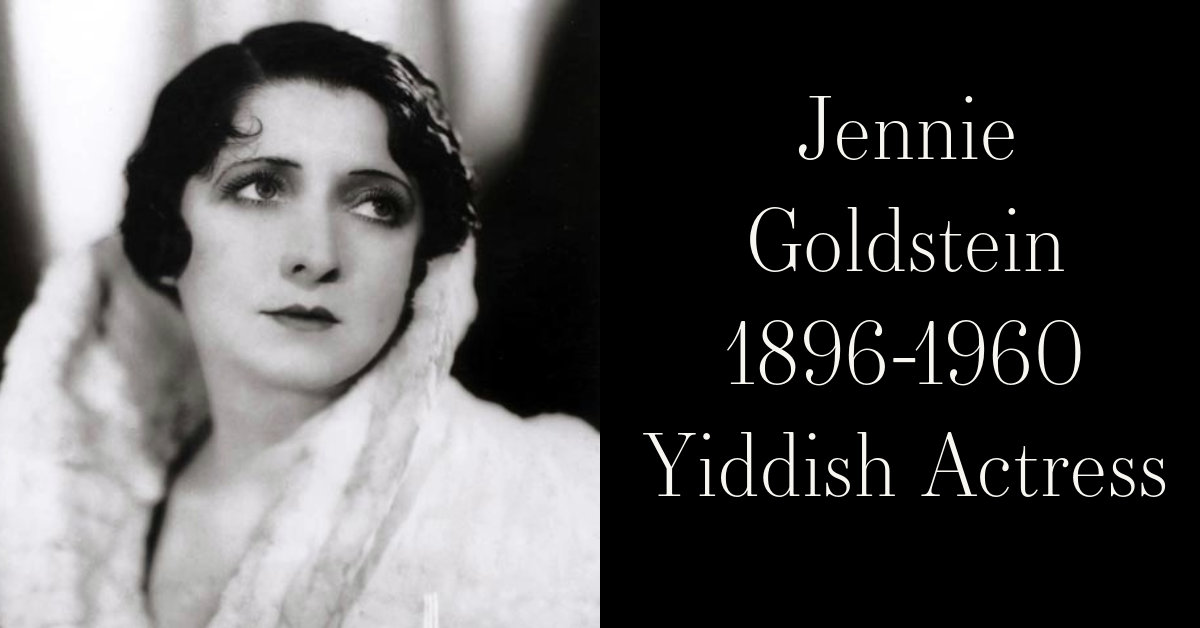Story Summary:
he Independent Kutner Young Men's Benevolent Association was established in 1903 in New York by immigrants from Kutno, Poland. The society provided death benefits and welfare aid to its members. The society uses Mount Hebron cemetery, Cedar Grove cemetery, and the Wellwood cemeteries of Queens and Babylon. While the town's history dates to the 14th century, documentation marks Jewish presence to the 15th century. Professions in crafts and trade were prominent among the Jews of Kutno. Despite their communal-restricted lifestyle, the Jewish community flourished, holding weekly fairs, establishing schools, promoting communal infrastructure, and forming unions. During the twentieth century, the Jews of Kutno involved themselves politically by taking part in government elections and Zionists organizations. From September of 1939 to March of 1942, the Germans implemented the harsh treatment and mass executions of Kutno's Jews. By the end of the war, only 213 Jews from Kutno had survived.
Independent Kutner Young Men’s Benevolent Association
The Independent Kutner Young Men’s Benevolent Association was established in 1903 in New York by immigrants from Kutno, Poland. The society provided death benefits and welfare aid to its members. They maintained an output of $10,000 per month to aid the Jews of Kutno, and $100 monthly for their soup kitchen and clothing distributions. They also functioned as a burial society. The “Kutner Young Men” society uses Mount Hebron cemetery, Cedar Grove cemetery, and the Wellwood cemeteries of Queens and Babylon.
While the history of Kutno dates to the 1300s, documentation of Jewish presence begins in the 15th century. The early community comprised mostly of those belonging to the artisan and trade professions. In 1538, the Polish nobility issued a resolution that excluded the Jews who were living in private towns from its protection. This drastically impacted the legal and economic lifestyle of the Jews, as their ability to inhabit the town now rested in the hands of the local landowners. Additionally, Jews had to pay a poll tax (the poll tax registry of 1579 showed that there were about 63 Jews living in Kutno at the time). This communal-restricted lifestyle lasted well into the 18th century.
In 1655, the “Swedish Deluge” occurred, an event where the Swedish army invaded and destroyed the Polish-Lithuanian Commonwealth. While Kutno was not directly involved in the warfare, it still suffered from severe damage at the hands of army individuals. This event consequently marked a period of economic instability and an increase in pogroms. In 1753, a fire occurred, destroying the many properties of Kutno, including a wooden synagogue. As the economy recovered, however, so did Kutno’s communal life. In 1766, the works for a brick synagogue began. Near the end of the eighteenth century, the Jews of Kutno established a hospital, as well as the Chevra Kadisha burial society. Land for the cemetery was bought from the landowners. The cemetery’s first burial occurred in 1793, the last occurring in 1948. A pharmacy, founded by Jan Zygmunt Ringsleben, was also established.
The nineteenth century marked a period of growing industrialization, with railway lines being established to transport goods between towns, such as from Łódź to Kutno. To prevent past incidents with town fires, many buildings began to be rebuilt with brick instead of wood. Professions in crafts and trade were still prominent, with 55% belonging to Kutno’s Jews. By the 1850s, Kutno was considered the center for trade, with weekly markets being held, endorsing their businesses in shoemaking, tailoring, and textiles. The nineteenth century also marked Kutno as a popular center for growing Torah studies.
The twentieth century was a period of growing political activism for the Jews of Kutno. The Kutno Bund was established in 1905, and their efforts included holding lectures, campaigns, and even participating in the local government elections. They also encouraged local Jews to form trade unions. Among those established was the trade Union of the Cobblers, and the Needle Workers’ Union. The efforts and recognition of Zionists peaked during this time, allowing them to win the majority of votes in the elections. Education was promoted through the proliferation of Jewish schools. Amid this, however, Poland was facing a serious economic crisis (1930s) that threatened the stability of many communities. The Society for the Support of Poor Jews was established in Kutno, with merchants, industrialists, and bankers aiding and providing assistance to individuals and families such as clothing, food, cash benefits, and communal infrastructure.
Following their invasion of Poland, the Germans began the first roundup of Kutno’s Jews on September 19th. On December 8th, Jews were required to wear the yellow star on their clothing. On April 14th 1940, a ghetto was established in Kutno, comprising 8,000 Jews (~7000 from Kutno and ~1000 from neighboring towns). They were given only 24 hours to take their belongings and relocate in the ghetto. From January 1941 to June 1942, the ghetto suffered from a typhus outbreak, killing about 500 people. Shortly after, a ban on the importation of goods to the ghetto was enforced by the Germans, which resulted in hundreds of starvation/hypothermia-related deaths. The Jews, to maintain their cultural and spiritual life within the ghetto, held meetings to discuss literature and sing songs. March 23, 1942 marked the liquidation of the Kutno ghetto. The remaining Jews were sent to the railway station in Koło, and then transported to the Chełmo extermination camp. Only 213 Jews from Kutno survived the Holocaust.
https://sztetl.org.pl/en/towns/k/493-kutno/99-history/137563-history-of-community
https://www.yadvashem.org/holocaust/this-month/june/1940.html
https://www.jewishgen.org/yizkor/kutno/kut011.html
https://www.holocausthistoricalsociety.org.uk/contents/ghettosj-r/kutno.html
~Blog by Olivia Scanlon





















